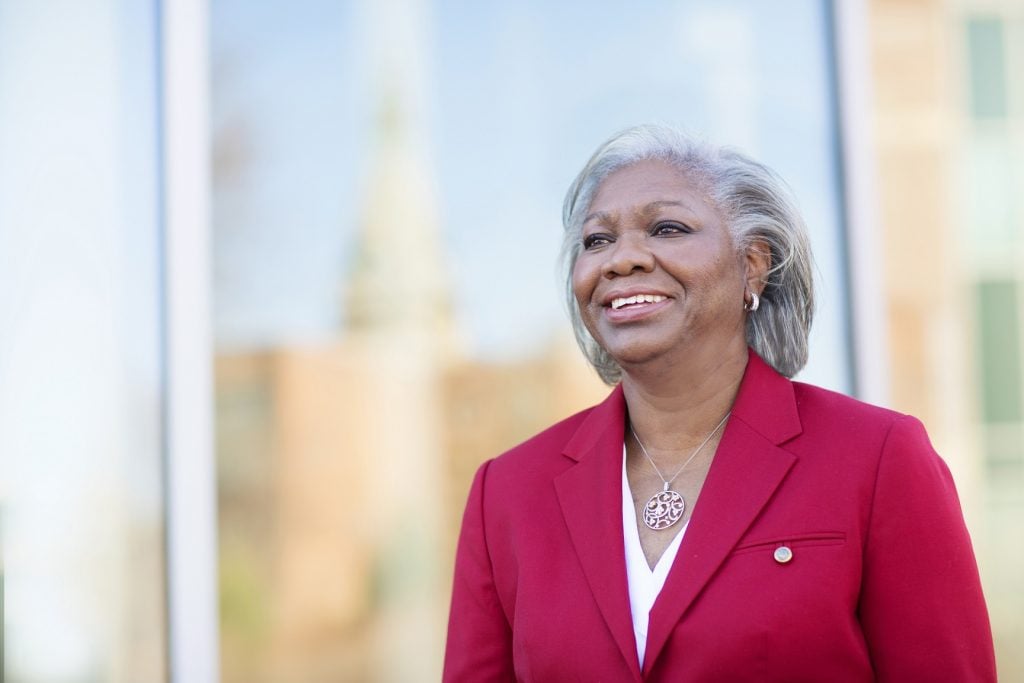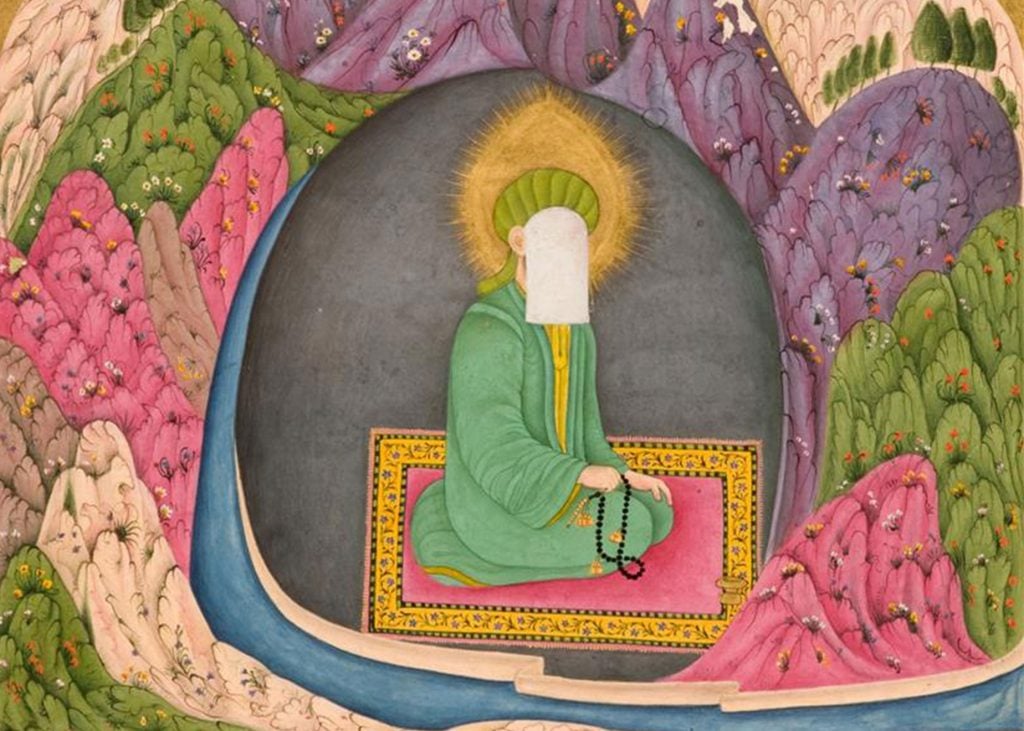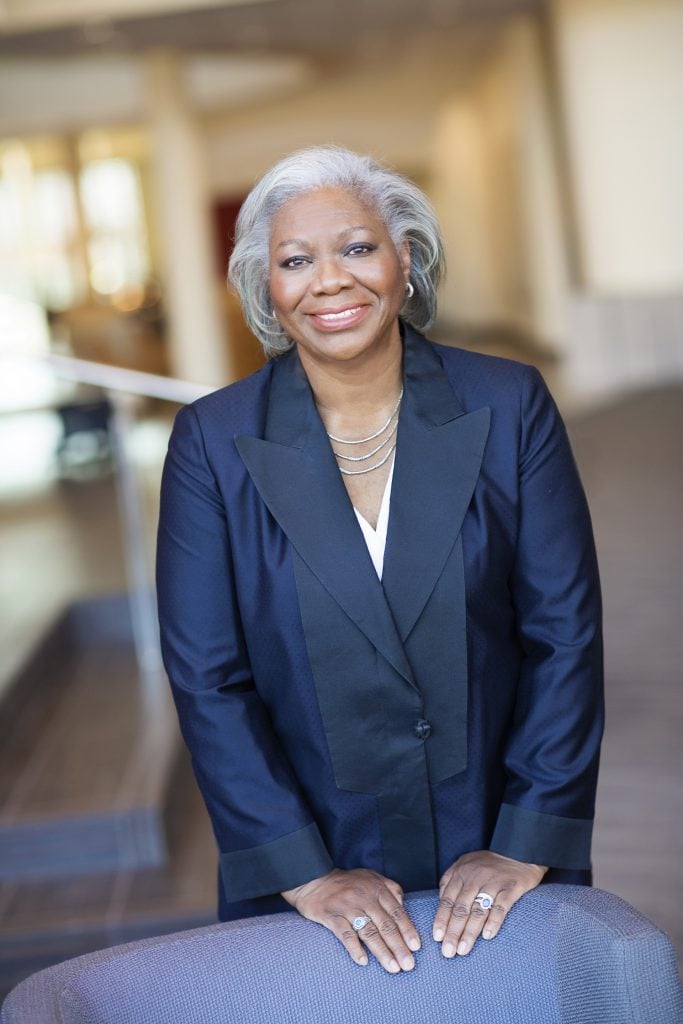Art History
The President of Hamline University, Which Fired a Professor for Showing Students Paintings of the Prophet Muhammad, Has Resigned
The controversial incident is now the subject of a lawsuit against the school.

The controversial incident is now the subject of a lawsuit against the school.

Sarah Cascone

Fayneese Miller, the president of Hamline University in St. Paul, Minnesota, will retire at the end of the next school year. Earlier this year, Miller became embroiled in controversy after the school refused to renew the contract of an adjunct professor who showed students historic images of the prophet Muhammad, offending a Muslim student.
“I hope as you report on my retirement that you will also acknowledge that you’ve been reporting on a false narrative,” Miller said at a press conference on Monday announcing her pending departure, reported Sahan Journal, a digital publication in Minnesota. “Hamline University believes in academic freedom. We believe in free speech. We believe in all of those things, and never has Hamline University violated anyone’s academic freedom.”
The school made headlines following an online class taught by Erika López Prater on October 6, 2022. The teacher had warned students before introducing the images during the lecture, so as to not offend anyone who believes depictions of Muhammad to be idolatrous. The 14th-century artworks included in the lesson were all used as devotional objects by practicing Muslims, and were examples of a little-known facet of Islamic art history. Some even obscured Muhammad’s face with a veil.
But when Aram Wedatalla—president of Hamline’s Muslim Student Association and a student in the class—complained, López Prater lost her job.

The prophet Muhammad in the cave of Hira, page from a Hamla-yi Haidari manuscript (ca. 1725). Asian Art Museum of San Francisco, gift of George Hopper Fitch.
The university sent out a university-wide email that described the lesson as “undeniably inconsiderate, disrespectful, and Islamophobic,” and the Oracle, the student paper, published an editorial titled “Incidents of hate and discrimination.” Later, Miller cowrote another email to the school community claiming that “respect for the observant Muslim students in that classroom should have superseded academic freedom.”
The resulting firestorm was further ignited by Christiane Gruber, an art historian who specializes in depictions of Muhammad, who wrote an article in López Prater’s defense for New Lines Magazine. Nearly 20,000 people signed her Change.org petition that called for the professor’s reinstatement. The school came under fire for what was perceived as censorship and, as PEN America called it, “one of the most egregious violations of academic freedom in recent memory.”
Even a Muslim group came out in support of López Prater, with the Muslim Public Affairs Council (MPAC) issuing a statement defending the lesson against charges of Islamophobia and asking that the professor get her job back.
The Hamline board of trustees and Miller later issued a statement calling its use of the word “Islamophobic” a misstep and reaffirming its commitment to academic freedom. In her exit speech, Miller denied any wrongdoing.

Minnesota’s Hamline University. Photo courtesy of Hamline University, St. Paul, Minnesota.
“No one was let go for showing an image, no academic freedom was violated,” Miller insisted on Monday. “I’ve been chomping at the bit to tell the story. But I know I’ll get in trouble if I do.”
Following López Prater’s ouster, the former professor filed a lawsuit against the university in January, alleging religious discrimination, breach of contract, and defamation. Her lawyers have argued that by calling the lesson “Islamophobic,” Hamline harmed López Prater’s career prospects and chances of getting a tenure-track position at another institution.
“During their conversation, Wedetalla did not suggest that López Prater had surprised students by showing the paintings. Instead, Wedetalla was enraged that López Prater showed the images at all, to anyone. By her statements and actions, Wedetalla wanted to impose her specific religious views on López Prater, non-Muslim students, and Muslim students who did not object to images of the Prophet Muhammad—a privilege granted to no other religion or religious belief at Hamline,” the lawsuit said.
The suit was originally filed in federal court, before moving to state court in February and back to federal court last month, according to Minnesota news station KARE 11. (In the process, López Prater dropped her breach of contract claims.)
Miller, who became Hamline’s first Black president in July 2015, described retiring as “one of the more difficult decisions I’ve ever made” at the press conference. She added that being separated from her significantly older husband, who lives in Vermont, during the pandemic had put a strain on her marriage and family.
“There’s more that I could say, but do know I leave my heart when I leave Hamline University,” Miller added.
But it’s not clear that the decision to leave Hamline was entirely her own.

Fayneese Miller is retiring as president of Minnesota’s Hamline University following the controversy surrounding a professor who lost her job after showing devotional images of the prophet Muhammad in art history class. Photo courtesy of Hamline University, St. Paul, Minnesota.
A reporter at yesterday’s press conference claimed that Jaylani Hussein, executive director of Minnesota’s chapter of the Council on American-Islamic Relations, told her that Miller’s retirement was actually a forced resignation. In a vote, a majority of the permanent faculty had called for the president to resign.
“Everyone knows me,” Miller responded. “I’m never forced to do anything I don’t want to do. And so I would not characterize my stepping aside as that.” She noted that while the majority of voting faculty had called for her resignation, there were also some 50 or 60 faculty members who did not attend the meeting or abstained from voting, and blamed the media for distorting the facts.
“You all were terrible towards me. I’m just gonna say that. You accused me of all kinds of stuff that I didn’t do,” Miller told reporters. “I got beat up in the media and so at some point, you know, you have to look at that and go, is this right for the institution?”
Hamline will be conducting a national search for Miller’s successor.